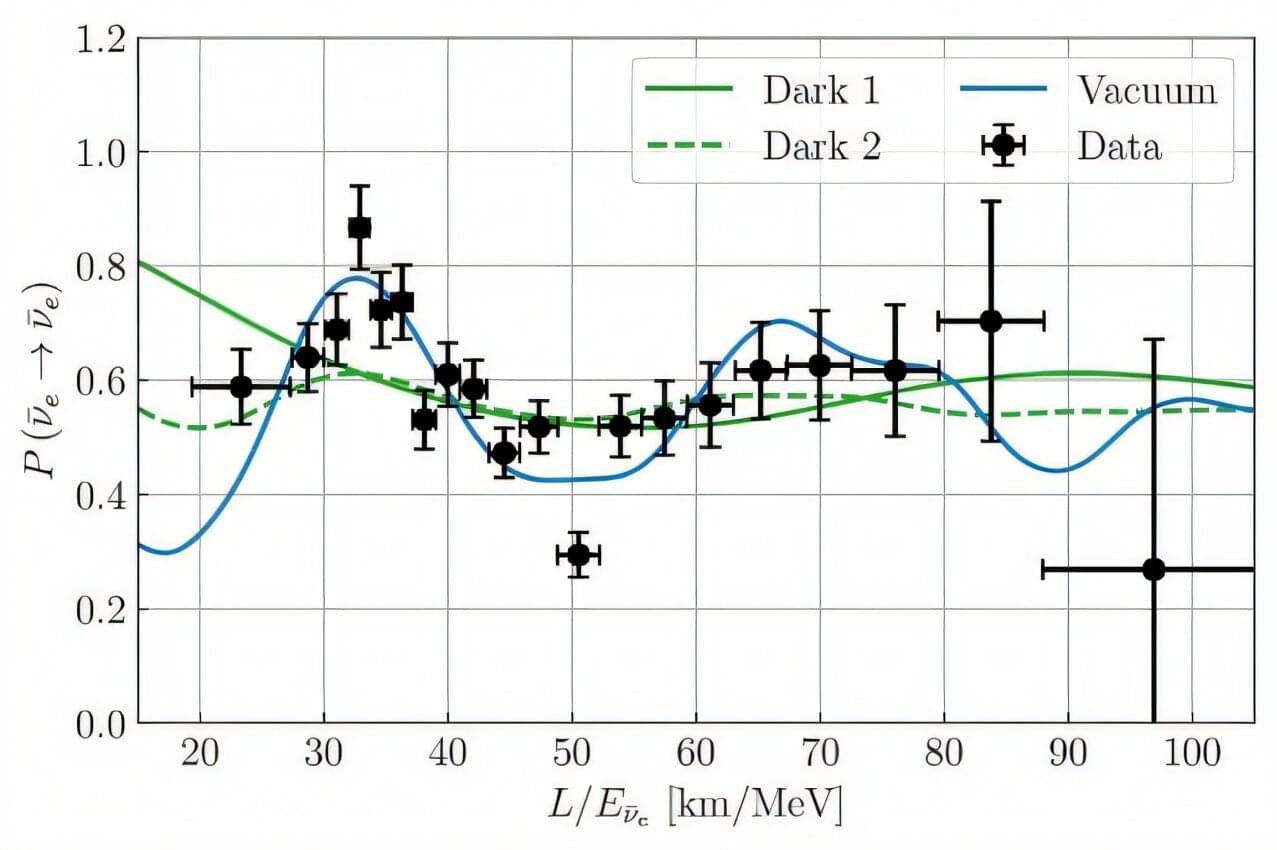The discovery corrects long-held assumptions in plasma physics and opens the door to studying complex, many-particle systems using AI.


Trying to capture antineutrinos at low energy has just become a lot easier.

Carl David Anderson was born in New York City, the son of Swedish immigrants. He studied physics and engineering at Caltech (B.S., 1927; Ph. D., 1930). Under the supervision of Robert Millikan, He began investigations into cosmic rays during the course of which he encountered unexpected particle tracks in his (modern versions now commonly referred to as an Anderson) cloud chamber photographs that he correctly interpreted as having been created by a particle with the same mass as the electron, but with opposite electrical charge. This discovery, announced in 1932 and later confirmed by others, validated Paul Dirac’s theoretical prediction of the existence of the positron. Anderson first detected the particles in cosmic rays. He then produced more conclusive proof by shooting gamma rays produced by the natural radioactive nuclide ThC’’ (208 Tl) [ 2 ] into other materials, resulting in the creation of positron-electron pairs. For this work, Anderson shared the 1936 Nobel Prize in Physics with Victor Hess. [ 3 ] Fifty years later, Anderson acknowledged that his discovery was inspired by the work of his Caltech classmate Chung-Yao Chao, whose research formed the foundation from which much of Anderson’s work developed but was not credited at the time. [ 4 ]
Also in 1936, Anderson and his first graduate student, Seth Neddermeyer, discovered a muon (or ‘mu-meson’, as it was known for many years), a subatomic particle 207 times more massive than the electron, but with the same negative electric charge and spin 1/2 as the electron, again in cosmic rays. Anderson and Neddermeyer at first believed that they had seen a pion, a particle which Hideki Yukawa had postulated in his theory of the strong interaction. When it became clear that what Anderson had seen was not the pion, the physicist I. I. Rabi, puzzled as to how the unexpected discovery could fit into any logical scheme of particle physics, quizzically asked “Who ordered that?” (sometimes the story goes that he was dining with colleagues at a Chinese restaurant at the time). The muon was the first of a long list of subatomic particles whose discovery initially baffled theoreticians who could not make the confusing “zoo” fit into some tidy conceptual scheme.


CERN scientists have analyzed a particle of antimatter isolated in an undecided quantum state known as a superposition for the first time.
While the quantum behavior of ordinary matter has been studied extensively and even used as the basis of quantum computers in the form of qubits, the breakthrough goes far beyond technological applications, potentially helping physicists understand why we even exist today.
The team suspended an antiproton – the antimatter counterpart of the proton – in a system of electromagnetic traps, and suppressed environmental interference that would mess with the particle’s delicate quantum state.
Scientists have imaged atomic thermal vibrations for the first time, revealing hidden patterns that could redefine quantum and nano-electronic device design. Scientists studying atomic-level behavior in advanced electronic and quantum devices have successfully captured the first-ever microscopy i

Neutrinos are fundamental particles characterized by no electric charge and very small masses, which are known to interact with other matter via the weak force or gravity. While these particles have been the focus of numerous research studies, the processes through which they acquire their masses have not yet been elucidated.
One hypothesis is that neutrino masses originate from interactions with ultralight dark matter, a type of dark matter theorized to be made up of particles or fields with extremely small masses below 10 electron volts (eV). Researchers at Shanghai Jiao Tong University and University of Salerno recently set out to test this hypothesis by comparing data collected by the Kamioka Liquid Scintillator Antineutrino Detector (KamLAND) experiment to theoretical predictions.
Their findings, published in a paper in Physical Review Letters, suggest that neutrino masses are not likely to have a dark origin.


Dark matter (DM) is a type of matter estimated to account for 80% of the universe’s total mass, but it cannot be directly detected using conventional experimental techniques. As DM does not emit, reflect or absorb light, most previous dark matter searches were aimed at observing either its weak interactions with ordinary matter using highly sensitive detectors or other signatures linked to its presence or decay.
Researchers at Texas A&M University recently introduced a new approach that could enable the direct detection of this elusive type of matter, leveraging a process known as the DM internal pair production. Their proposed strategy, outlined in a paper published in Physical Review Letters, could open new possibilities for future DM searches focusing on a wide range of candidate particles.
“The particle nature of DM can be revealed when a DM particle scatters off a nucleus and produces a visible recoil signal,” the authors told Phys.org. “However, for light DM, transferring sufficient energy to a heavy nucleus is kinematically challenging, even if the DM is energetic. To overcome this limitation, we developed a framework where additional particles are produced in the final state, allowing the DM’s energy to be shared among them, while the nucleus remains largely at rest.”

A research team at the Politecnico di Milano has developed an innovative single-atom catalyst capable of selectively adapting its chemical activity. This is a crucial step forward in sustainable chemistry and the design of more efficient and programmable industrial processes.
The study was published in the Journal of the American Chemical Society.
This achievement is novel in the field of single-atom catalysts. For the first time, scientists have demonstrated the possibility of designing a material that can selectively change its catalytic function depending on the chemical environment. It involves a sort of “molecular switch” that allows complex reactions to be performed more cleanly and efficiently, using less energy than conventional processes.